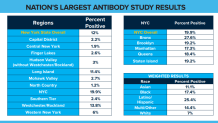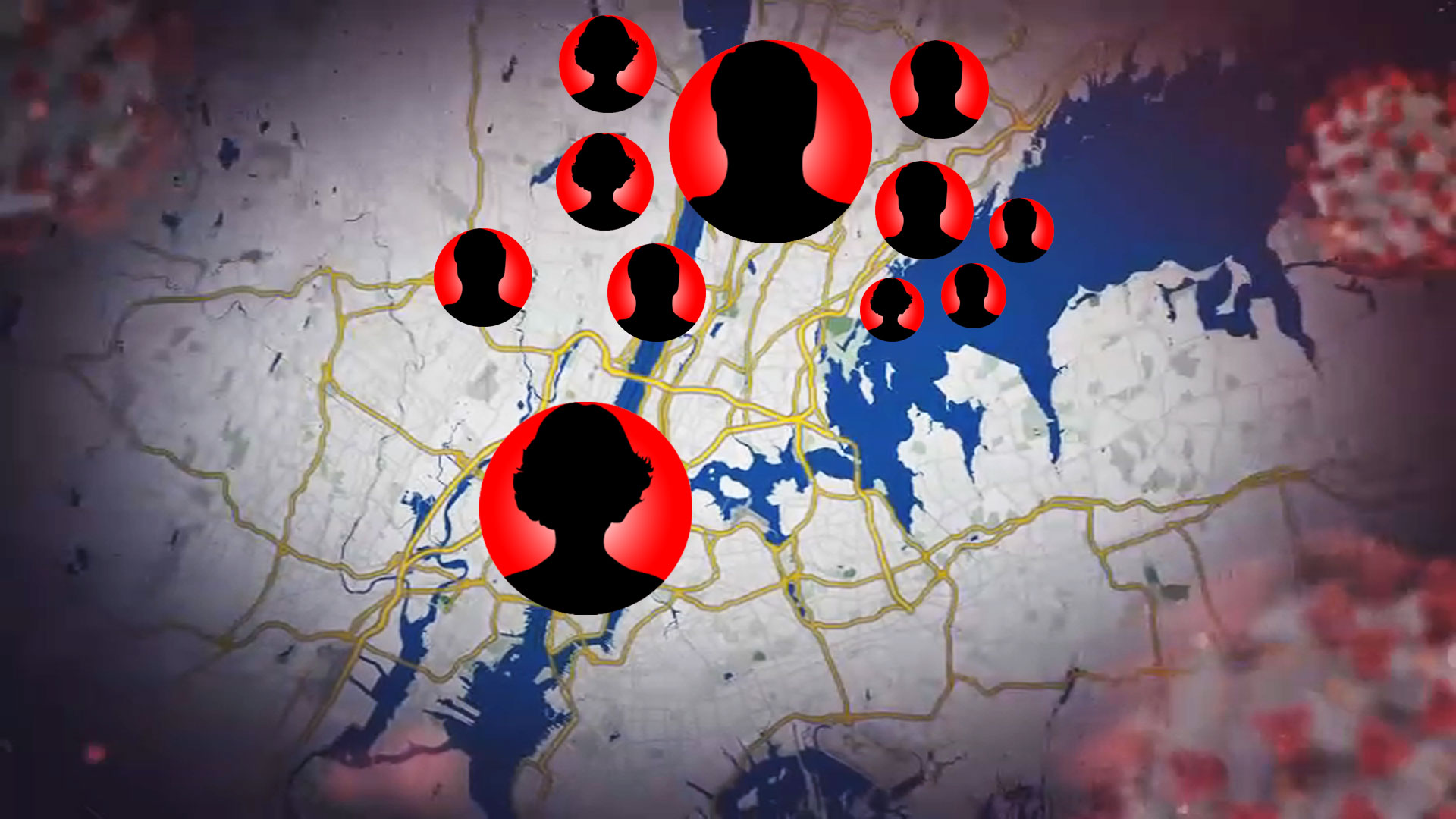What to Know
- More than 34,000 people in the tri-state area have died because of COVID-19, though officials admit the real toll is likely higher; other indicators like infection rate and total hospitalizations continue a slow decline
- New York Gov. Andrew Cuomo's "PAUSE" order expires Friday; three regions meet his criteria to begin reopening. Mayor de Blasio doesn't expect non-essential business to reopen in NYC city before June
- New Jersey's shutdown order is also set to expire on May 15; Gov. Phil Murphy says he hopes to have some "hard dates" later this week, but shared new data he says shows NJ is now the most impacted state
As three regions in New York look to begin their economic reboots when Gov. Andrew Cuomo's "PAUSE" order lifts Friday, the nation's top infectious disease expert is issuing a dire public warning about the risks of America reopening too early.
Avoidable "suffering and death" may come to states that reopen before meeting key benchmarks outlined by health experts, Dr. Anthony Fauci testified before a Senate committee Tuesday. "There is a real risk you will trigger an outbreak you might not be able to control."
Early warning signs are already evident. Georgia, for example, saw infection rates spike when it opened to a degree that health experts warned could be inflammatory. Several metro areas and small communities have seen record spread in recent weeks, according to undisclosed data the White House task uses to track infection rates.
Cuomo and New York City Mayor Bill de Blasio, among others, are both concerned that infection surges in other states will eventually make their way to New York, just as New York strains fueled initial outbreaks elsewhere. No one wants to go through this twice.
"An outbreak anywhere is an outbreak everywhere." Cuomo has repeated that phrase, which he describes as a core lesson learned from the crisis, in multiple daily briefings. "We'll open when we're ready to open," he says.
Some regions are ready to go now. The Mohawk Valley, Southern Tier and Finger Lakes regions will be the first in New York to open their doors, meeting all seven metrics Cuomo requires they achieve before moving forward. Central New York and the North Country have a chance to meet the goals, all tied in some way to infection rate and capacity (hospitals, testing, contact tracing and isolation) by Friday. (Scroll down to see a graphic charting where each of New York's 10 regions stand and see the state's full reopening guide here.)
The regional reopening plan is based on four phases. A two-week monitoring period is required between each phase; each region has a Regional Control Room to oversee developments. Should any metric slip, the control room acts as a "circuit breaker," essentially pausing the reopening until the issue is addressed.
"Worst case scenario, you close the valve. Other countries have had to do this that have reopened too quickly," Cuomo said Tuesday. "This is the most advanced way in the nation to give citizens the information they need to live their lives correctly."
New York City is about halfway to meeting the governor's standards. While achieving key milestones on testing, total hospitalizations and hospital deaths, the five boroughs are still seeing too many new daily hospitalizations. Just 51 people were newly admitted to hospitals in the last daily report, de Blasio said Tuesday. But the metric is based on a three-day rolling average, and while New York City has seen a number of good days recently, it has to string more together.
At this rate, de blasio doesn't expect New York City will be in a position to even consider reopening non-essential business before June. Broadway has canceled performances through Labor Day.
"It has to be based on numbers and science," the mayor said of reopening. We're not there yet.
Apart from lowering new daily admissions, the city needs to make more hospital and ICU beds available. Currently, more than 70 percent of each is in use, which Cuomo says jeopardizes the system's ability to handle any viral resurgence that may emerge during the reopening process.
Regions must also see a decline in the three-day rolling average of hospital deaths over a 14-day period. New York City has met that, Cuomo said. That may be the simplest fatality metric, but the death rate is far more complicated.
Region by Region Status
Source: New York State; Report as of May 11
New Jersey Now Most Impacted State, Gov. Phil Murphy Says
New Jersey Gov. Phil Murphy says he hopes to have some "hard dates" to share on the reopening timeline this week but added "don't hold us to it," indicating his state may not be ready to begin its process Friday when his shutdown order is set to expire.
"The road back is paved with five words: Public health creates economic health," Murphy said Tuesday. "We'll move as quickly as we can but as safely as we must."
Murphy shared a graphic showing the positive trends in his state (above), but was also conscious of the stark reality. Right now, New Jersey has more cases per 1,000 residents and more new deaths per 1,000 residents than any other state in the country, the governor said. "Data drives dates," he noted.
Testing and contact tracing are pillars of any reopening strategy, and will also be core to the rollout in New Jersey. The state has ramped up testing capacity significantly over the last few months, from 6,000 daily tests in March to 12,000 in April. By the end of May, Murphy hopes to have 20,000 tests a day, with a goal to conduct at least 25,000 per day in June. He's looking into opening new testing sites at faith institutions in the coming weeks.
With more than half of his state's 9,508 deaths coming from long-term care facilities, New Jersey's health commissioner issued an executive order requiring all residents and staff at those centers to be tested by May 26 if not sooner, with follow-up testing required no more than one week later.
To drive down future infection spread, Murphy plans to implement a new, centralized contract tracing program to supplement regional efforts underway. The state is contracting with Dimagi to use their uniform CommCare platform, which will help New Jersey coordinate and share information. Murphy is also looking for at least 1,000 dedicated contract tracers to augment the roughly 800 to 900 already on the ground, he said.
"Without testing and contract tracing working hand in hand we cannot get on the road back," Murphy said. "Even when COVID-19 recedes we have to be prepared for its eventual return."
Tracking Coronavirus in Tri-State
Tragic Scope of Pandemic May Never Be Fully Understood
New York City is on the brink of a grim 20,000-death milestone. It counts 5,136 probable virus deaths -- cases where death certificates list COVID-19 or an equivalent as a cause despite no diagnostic test -- along with the 14,800 confirmed by the state. The city made the move to include probable fatalities in its death toll weeks ago in accordance with CDC guidelines that recognize many people die at home without ever being tested for the virus.
That, de Blasio had said, was the only explanation for a nearly 400 percent spike in "cardiac arrest" home deaths between March 20 and April 5, as New York City approached the peak of the crisis, over the same time period last year.
Even probable deaths may not fully capture the scope of the pandemic's tragedy in New York City. A new CDC reports finds 5,293 additional "excess" New York City fatalities not confirmed as COVID-19 or even probably related to the virus that may still be in some way attributed to it.
Those 5,293 deaths account for 22 percent of the overall 24,172 "excess" deaths -- the ones above typical baseline -- the city saw between mid-March and May 2, the CDC said.
The agency's report highlights the jarring sense of uncertainty that has millions of New Yorkers as fearful as they are eager to resume more normal daily lives. This virus has proven mysteriously adaptable, stumping even the globe's top scientists and health experts.
Asymptomatic people can transmit it. Antibody immunity is not proven. The virus may not largely spare children, as was previously believed. Instead, it may manifest in a far more inconspicuous and potentially deadly way. About 100 cases of a new pediatric inflammatory syndrome possibly linked to COVID-19 have been identified in New York. Most of the cases involve children younger than 9; at least three children have died, two more deaths are underinvestigation.
As of Tuesday, New York state had confirmed 21,835 virus deaths, with Cuomo adding 195 more names to the mounting toll. New Jersey has confirmed more than 9,500 COVID-19 deaths, losing its youngest victim, a 4-year-old girl, to the virus last week. Connecticut's death toll eclipsed 3,000 on Monday.

More than a half-million infections have been confirmed in the tri-state area, though the virus has likely sickened far more who never were tested. New York state has reported 338,485 virus cases to date, nearly 190,000 of those in New York City. New Jersey and Connecticut respectively had 140,743 and 33,765 cases as of their governors' last reports.
The IHME released another new round of projections Tuesday night, forecasting that the tri-state could lose more than 53,500 people due to COVID-19.
Nationally, the virus has killed more than 83,000 people and infected nearly 1.4 million, as the pandemic's already catastrophic economic and psychological costs continue to mount.



